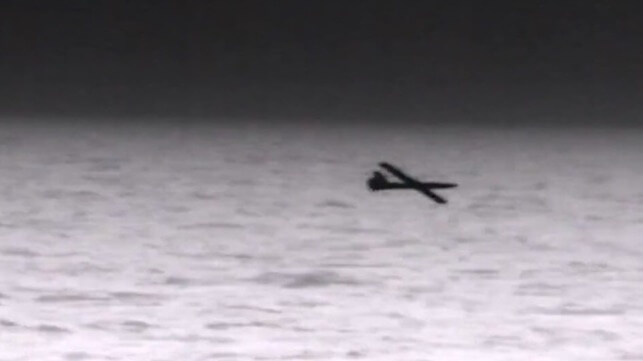Yemen’s Houthi rebels claim responsibility for long-range drone attack on Tel Aviv

Yemen’s Houthi rebels have claimed responsibility for a drone attack that hit a residential building in the Israeli city on Thursday evening, killing one resident and wounding four. If confirmed, the attack would be a rare example of an externally launched attack hitting a target inside Israel’s well-developed air defense ring – and at an unusually long distance for the Houthis. Initial reports from bystanders and several local media reports suggest the drone came from the sea, which would represent a large deviation from its course if it had launched from Yemen.
The Houthi group has already demonstrated considerable capabilities in drone attacks on merchant vessels in the Red Sea, but Tel Aviv is 1,000 nautical miles north of the territory controlled by the Houthis – beyond the maximum range of their known drones. The Houthi group had previously attacked the geographically closer Israeli port of Eilat, but without success.
Footage from a doorbell camera in Tel Aviv shows more clearly what sounds like a drone turboprop engine just before it explodes. pic.twitter.com/0uDXeczruK
— OSINTdefender (@sentdefender) July 19, 2024
The high-rise building in Tel Aviv, which was probably hit by a large drone, suffered significant structural damage to its upper floors. pic.twitter.com/M7nyWO9RsG
— OSINTdefender (@sentdefender) July 19, 2024
Pictures taken by passersby at the scene in Tel Aviv show parts of a medium-sized drone with straight wings. Surveillance cameras near the scene recorded the sound of a loud internal combustion engine – like that of a typical turboprop drone – shortly before the explosion. The Israel Defense Forces have confirmed that the explosion was caused by an “aerial target”.
Initial open-source intelligence analysis of the drone debris points to a family of drones operated by the Houthi, the Samad series. This model bears the name of former Houthi leader Saleh al-Sammad, who was killed in the Yemeni civil war in 2018.
Some suspect that the drone, which previously struck a building in Tel Aviv, could be a variant of the “Samad-1” airstrike drone operated by both the Houthis in Yemen and Iranian forces, and possibly Hezbollah. The drone is large and images of the… pic.twitter.com/UgqqSprfsd
— OSINTdefender (@sentdefender) July 19, 2024
The long-range variant, the Samad-3, was identified by the Israeli Defense Forces as identical to the Iranian-built KAS 04 – a drone used by the Iranian-backed Houthi forces against US ships in the Red Sea. The destroyer USS Carney shot down a KAS 04 approaching a U.S. ship in the Red Sea last November. The KAS 04 also gained notoriety through its use by other Iranian proxy forces, which deployed it in 2021 to launch attacks on American outposts in Iraq.
The Houthi group has not yet elaborated on its claims, and the Houthis are far from the only operators of this series of drones. Others are much closer: Another proxy backed by Iran – the Lebanese terror group Hezbollah, which regularly engages in cross-border firefights with Israeli forces – is known to operate similar drone models.
“The math (of a Houthi attack) just doesn’t add up at all, unless it’s a completely new system or it’s launched from somewhere other than Yemen,” says Charles Lister, director of the Syria division at the Middle East Institute.



